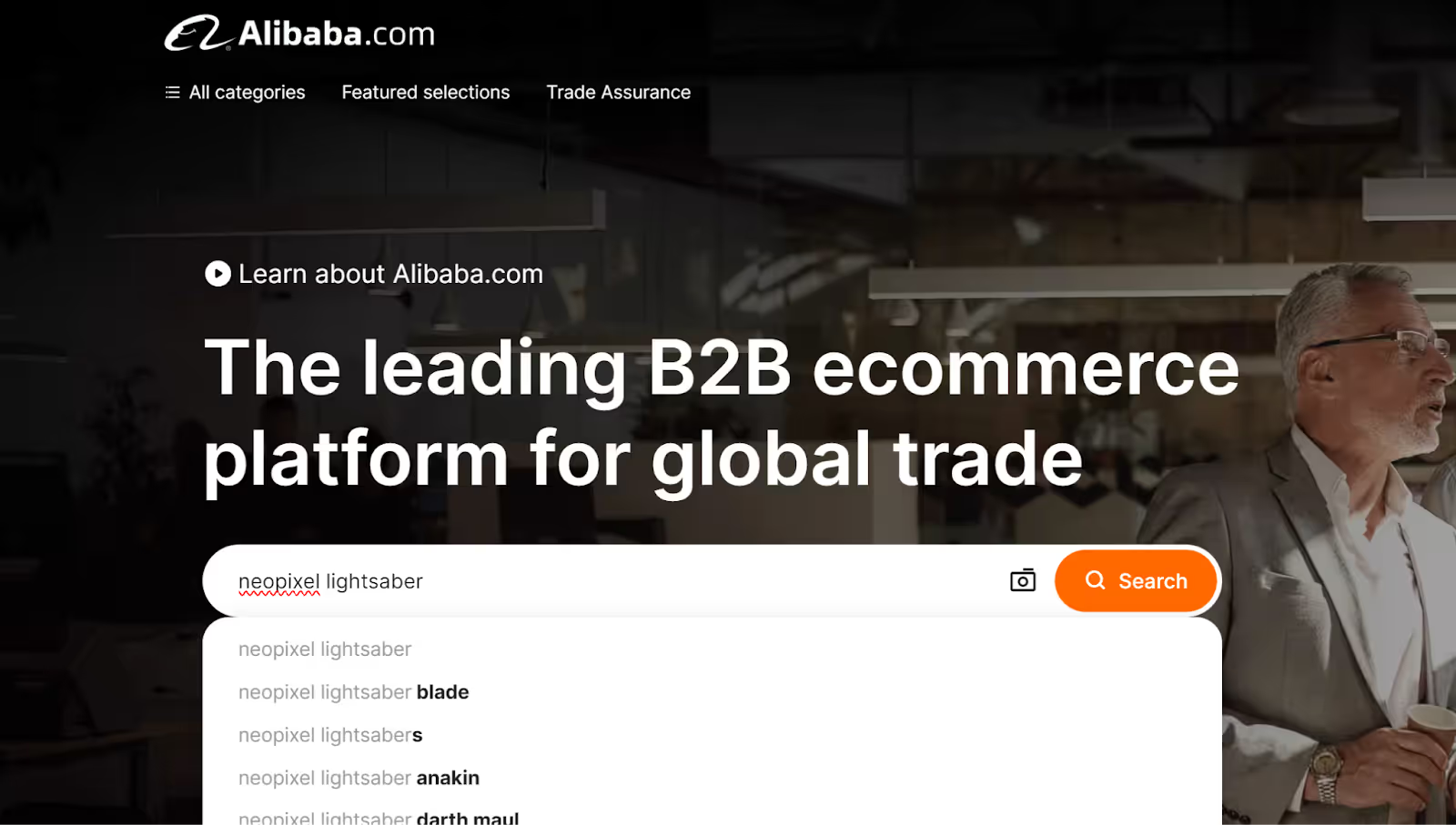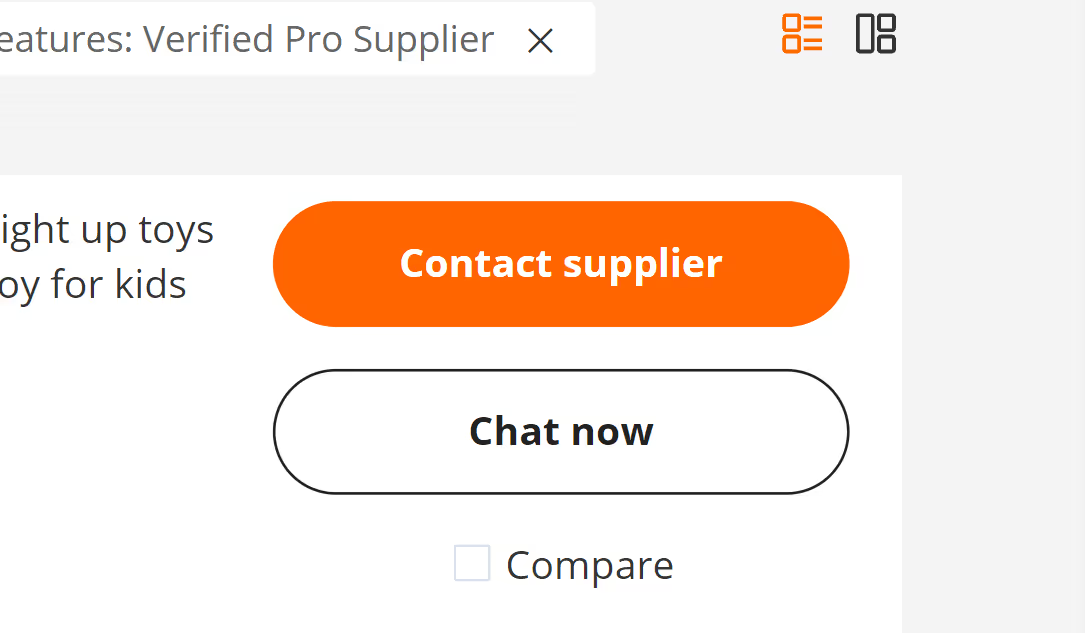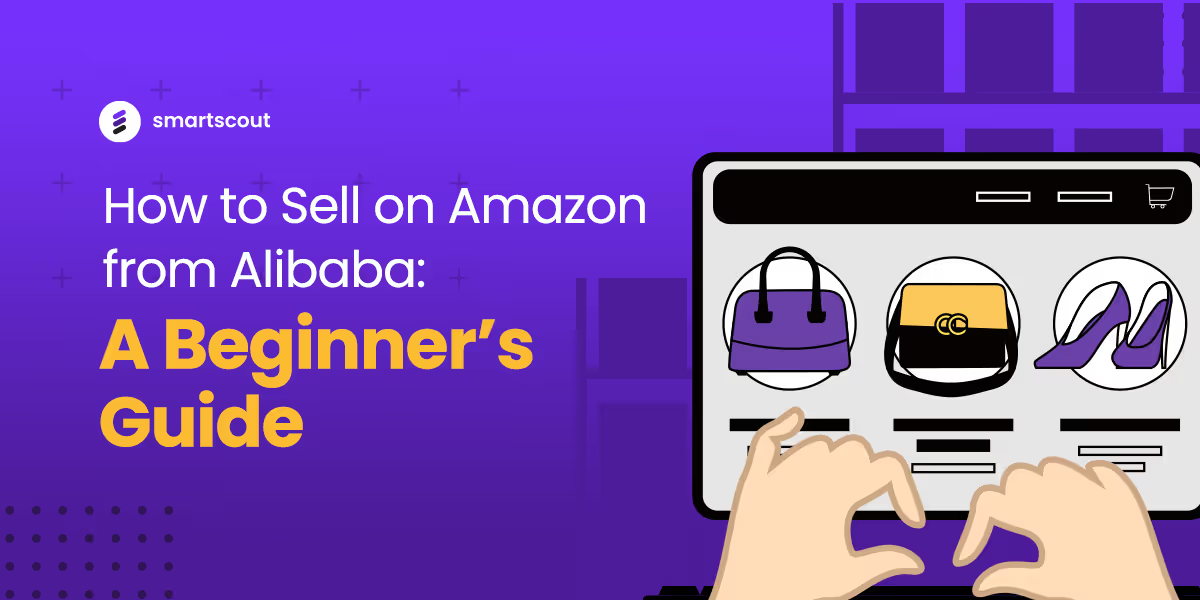Selling on Amazon from Alibaba is a classic intro to ecommerce and selling products online.
Alibaba makes it easy to find cheap manufacturers that can make your products, ship them over to Amazon, and then sell those products to Amazon users.
Despite being one of the best ways to get introduced to online selling, the Amazon FBA and Alibaba strategy can be difficult and confusing. If you’ve been looking at YouTube videos or other articles on this topic, you’ll find varying instructions or advice that feel dated. That’s because Amazon and online selling, in general, is a very adaptive industry, so sometimes updates change how the game is played.
Thankfully, once you understand the basic flow of how to sell on Amazon from Alibaba, you’re pretty much set for life, and that’s what this article is for. We’re going to talk about everything there is to know about the topic, from private and white labeling definitions all the way to vetting manufacturers and ultimately getting yourself paid.
How To Sell on Amazon from Alibaba
Amazon FBA (Fulfillment by Amazon) is a service provided by Amazon that allows sellers to store their products in Amazon's fulfillment centers. When a customer places an order, these fulfillment centers pick, pack, and ship the product on behalf of the seller. Additionally, Amazon provides customer service and handles returns for these products.
The basic concept of selling on Amazon from Alibaba involves sourcing cheap products from Alibaba and then selling them through Amazon FBA.
The flow typically includes the following steps:
- Finding products on Alibaba
- Contacting suppliers on Alibaba
- Shipping and logistics from Alibaba to Amazon
- Listing products on Amazon
- Managing inventory and sales
While the flow is easy to understand, completely eliminating the risk and being diligent with each step is crucial to being successful. There are so many mistakes and hiccups you can encounter on each step that will cost you thousands of dollars, so don’t rush the process.
What is Alibaba?
Alibaba is a global business-to-business (B2B) ecommerce platform based in China that connects sellers and brands with manufacturers and suppliers. The platform facilitates the exchange of millions of products from all kinds of categories. Because the platform and manufacturers are all based in China, the prices for all the products are significantly cheaper than if you had it manufactured in America or some other Western country.
While Alibaba used to be a direct competitor to Amazon in the past, it has slowly moved into being a platform for manufacturers and sellers instead of consumer ecommerce like Amazon.
Private Labeling and White Labeling: Amazon FBA
There are two primary approaches to selling on Amazon: private labeling and white labeling.
While both methods involve selling products on Amazon from Alibaba, they differ in their level of control and brand identity.
Private labeling: building your brand identity
Private labeling involves creating your own brand with the intention of growing that brand long-term.
You’ll be selling products under your unique brand name and aiming to retain customers and grow your brand’s reputation. This approach grants you complete control over the product's design, manufacturing, and marketing, allowing you to establish a distinct brand identity and differentiate yourself from competitors.
This is much more difficult to do than white labeling, but it has better long-term returns and predictability. Just keep in mind that I strongly don’t recommend private labeling for first-time ecommerce sellers.
White labeling: rebranding ready-made products
White labeling involves purchasing existing products from a manufacturer and rebranding them under your own brand name. This approach offers a quicker and less expensive alternative to private labeling, as you don't need to invest in product development, brand marketing and growth, and so on.
All you have to do with white labeling is to find existing products, slap your brand name on those items and then sell them. Of course, these products are generally cheaper because they’re generic and lower quality, but there is a big market for these kinds of items.
Key Differences Between White Labeling and Private Labeling
Here are the biggest differences between the two and why beginners should aim to do some basic white labeling first.

Remember, the success of your Amazon FBA business depends on your ability to source quality products, optimize listings, and effectively market your brand. Even if you are a first-time ecommerce seller, if you happen to have experience with managing and growing brands, then perhaps you consider private labeling for a long-term approach.
Just choose the approach that aligns with your strengths and resources to maximize your chances of success.
Note: For the rest of the article, I’ll be writing in the context of white labeling. This is because white labeling is easier for first-time ecommerce sellers, which is the target audience for this article.
Finding Products on Alibaba
Once you’ve set up your account on Alibaba, it’s time to find the right product to sell on Amazon.
This is called the Product Research phase. When looking for the right product to sell, it’s important to consider these:
- Low competition
- Lots of demand (traffic) and potential for high-volume sales
- Low cost
- Medium to high profit
NOTE: Don’t sell counterfeit products. If you come across a branded product, it is most likely a counterfeit, and selling counterfeit goods on Amazon will get you banned.
Further reading:
How to Find the Most Trending Searches on Amazon
How to Do Product Research
One of the best ways for beginners to do product research is to divide your attention into two: trending and growing.
Trending markets are important, and being the first supplier to hop onto a trend is literally a million-dollar opportunity. But guessing the right trends and being first isn’t a guarantee, and ecommerce is very competitive. So, spend some time finding what’s trending, but also look for lower-hanging fruit that will help you make a stable income.
The good news is that you can still make a lot of decent earnings just by filling in the gaps. There are tons of searches on Amazon with high traffic, but only have a few sellers or bad products in the results. These searches will likely be populated in the future, especially if the space is “growing.” A good example of this is pickleball, which has become the fastest-growing sport in America and a million-dollar industry in just a few years.
Contacting Suppliers on Alibaba
Effectively contacting suppliers on Alibaba is crucial for successfully sourcing products and getting your money’s worth.
Open Alibaba and make an account. You’ll need to input a lot of information, including your phone number. After that, go ahead and start searching for your product.

A lot of search results will show up, so you need to filter them out by verification and with trade assurance. This will guarantee that the only suppliers you see are verified by Alibaba, and any orders you make with them will be protected by Alibaba through the Trade Assurance program.

Trade Assurance is valuable for buyers to protect against scams and frauds. Suppliers pay a fee to Alibaba to be part of the Trade Assurance category, and this fee is used to fund the program and cover the costs. However, the Trade Assurance policy is different for every seller. Some sellers have a higher protection level, while Alibaba can only protect a small amount of orders from other sellers. The protection level depends on the seller’s trade history and qualifications.
Here’s how Trade Assurance protects you:
- Payment protection: If the supplier fails to deliver the goods or services as agreed upon, Alibaba will refund the buyer's payment.
- Dispute resolution: If there is a dispute between the buyer and the supplier, Alibaba will step in to mediate the situation and help reach a resolution.
- Supplier verification: Alibaba verifies the suppliers who participate in Trade Assurance, ensuring that they meet certain quality and reliability standards.
Once you’ve found a product you like, open the product page so we can start evaluating the sellers. At the top-left corner of the product page, you’ll find the name of the supplier and a link to that manufacturer's store page. This is where you can look at the reviews, what products they offer, their quality control, shipping authorizations, and so on.

If you’re happy with your first evaluation of the product, go ahead and contact the supplier so you can start negotiating and planning.
NOTE: Sometimes, a supplier’s sample product is better quality than their batch products. This is a scam, so be wary of this. Order multiple samples and avoid unrealistic prices that are “too good to be true.”
If you encounter discrepancies between the sample and the bulk order, start gathering evidence to build a case. This will be useful in a dispute, especially when using Trade Assurance.
Shipping and Logistics
There are two primary methods for arranging shipping from Alibaba to Amazon FBA:
- Supplier-arranged shipping: Many Alibaba suppliers offer shipping services and can handle the logistics of delivering your products to Amazon FBA fulfillment centers. This option can be convenient, as the supplier takes care of the details, but it may not provide the most control over the shipping process.
- Self-arranged shipping: You can also arrange shipping yourself by hiring a freight forwarder or using a third-party logistics (3PL) provider. This approach offers more control over the shipping process and allows you to compare rates and choose the most cost-effective option.
For white labeling, you should go with the supplier-arranged shipping by Alibaba. Just be aware of customs and import duties in your country and ensure that all necessary paperwork is in order to avoid delays or additional fees. The normal instructions for shipping and logistics may differ from country to country, and it's important to be aware of the specific regulations and requirements for your location.
Amazon FBA also has specific requirements for labeling and packaging, and it's important to ensure that your supplier follows these requirements to avoid any issues with Amazon.
The shipping and logistics process generally takes several weeks, depending on the shipping method and location. From sourcing and ordering products to having them ready to sell on Amazon, the process can even take several months, depending on the complexity of the product and the shipping method used.
Listing products on Amazon
Although your products will take several weeks to arrive, you need to have your product listing done before you start shipping directly from China to Amazon FBA.
Go to the Seller Central page and look for Catalog, then navigate to Add products.
From there, choose “I’m adding a product not sold on Amazon” and then select the product category of your item. You’ll then enter your product information, like the brand name, images, features, descriptions, UPC, and so on.
When you’re done filling out the details, your listing will go live once your packages from China arrive to the FBA center.
Tips To Improve Your Listing on Amazon
We have a whole article that goes into detail about how to optimize your Amazon listings, but here’s a short snippet of what to do.
- Write a compelling title with relevant keywords
- Include bullet points in your description that sell
- Make sure your images are clear and high quality
- Focus on collecting your initial reviews
- Don’t break amazon’s rules
Optimizing your product listing is a crucial step that’s often underestimated or overlooked. Making sure your listings are optimized will build the perfect foundation for boosting your performance with Amazon PPC campaigns.
Managing Inventory and Sales
Managing inventory and sales on Amazon FBA when selling from Alibaba can be difficult. But, Amazon has tools to help sellers manage their inventory and know when to restock:
- Inventory management: Amazon has tools and reports available through Seller Central to track inventory in Amazon's warehouses. These tools will help minimize lost sales opportunities, avoid stock shortages, and prevent excess inventory, ultimately optimizing inventory management.
- Restocking: Monitor inventory levels and plan for restocking to ensure a continuous supply of products. Amazon's machine learning-based inventory management system, available through FBA, uses inputs like the cost of goods sold, shipment time, and Amazon data to forecast customer demand and set optimum inventory levels.
- Sales monitoring and pricing adjustments: Regularly monitor sales performance and adjust pricing and promotions as needed to optimize sales. Amazon offers a suite of inventory management tools, including daily inventory and storage reports, to provide data-driven recommendations for managing sales and inventory effectively.
Managing inventory and sales on Amazon FBA when selling from Alibaba is done through Amazon's inventory tools. Just remember how long restocking will take in shipping and to continually ask for samples so you can continue to verify the product quality.
Think Beyond Just Selling Products
Selling on Amazon is an opportunity to carve out a unique market niche.
You can start with white labeling to understand customer preferences and how products fit your brand's story. This phase helps you learn about the market and identify what customers like.
Once you're comfortable, shift to private labeling. This step is about taking more control, creating products that reflect your unique vision and values. It's a transition from just selling products to actively shaping your brand.
This progression from white labeling to private labeling is not just a change in business model, but a growth in your role as a brand creator, influencer, and innovator in the market.











